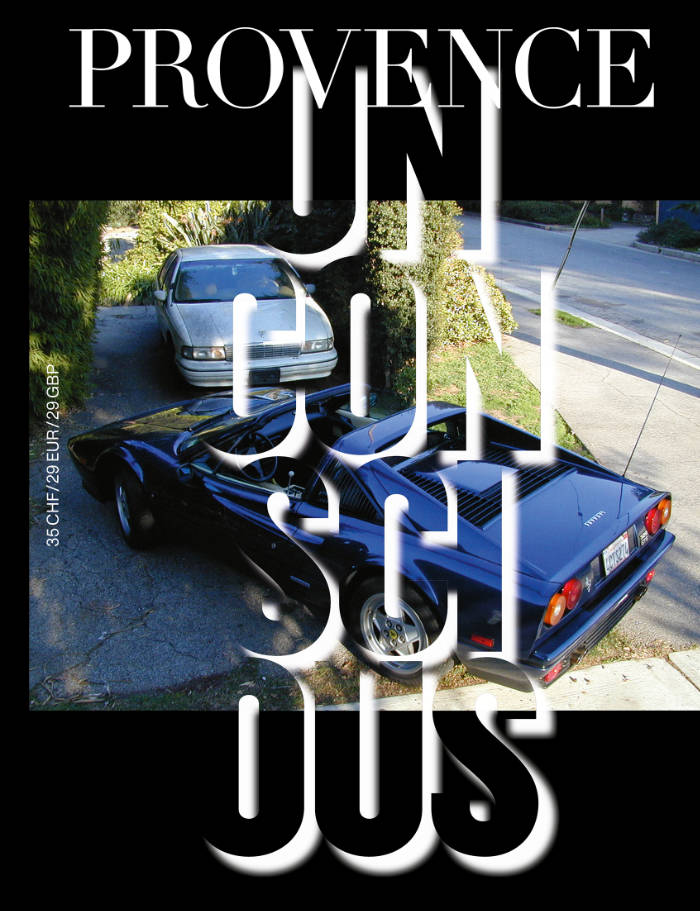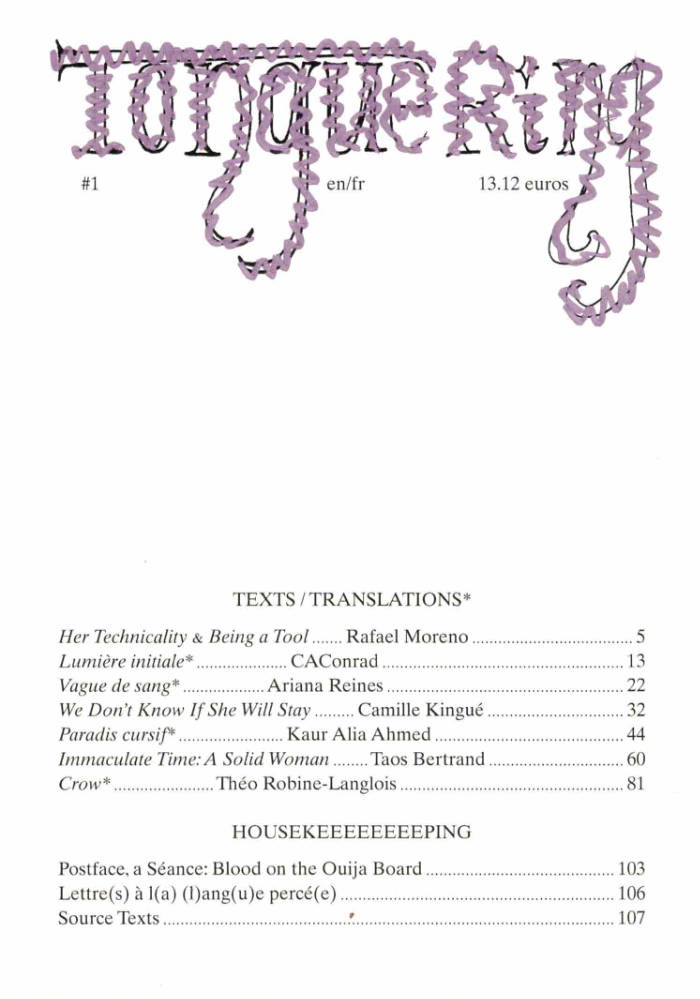
PROVENCE UNCONSCIOUS
Tobias Kaspar ed.
PROVENCE UNCONSCIOUS deep dives into the cosmological pool that shapes the collective unconscious and takes a look at the relevance of Jung's ideas in relation to contemporary art and fashion.
PROVENCE UNCONSCIOUS draws inspiration from the Zurich-based office's proximity to the C.G. Jung Institute in Küsnacht—recently and notably visited by Pamela Anderson, who also appears in the publication. PROVENCE UNCONSCIOUS focuses on the work of three US-American artists—Mike Kelley, Matt Mullican, and Jason Rhoades—whose practices orbit around the themes of psychoanalysis and the unconscious. The issue also features collaged analog photographs of Laura Langer's spiral paintings, and a manuscript-style dream archive: over 30 hand-written or drawn submissions by artists, curators, jungians, and writers. Additional sections include, among many other things, jewelry by Bernhard Schobinger, photographs by Calla Henkel and Max Pitegoff, and a curatorial exploration of Emma Jung—analyst and wife of C.G. Jung—shedding light on the often-overlooked feminine legacy within Jungian thought.
PROVENCE UNCONSCIOUS didn't include any cooking recipes. And no, PROVENCE is not a magazine—but if it were, it would probably be the most radical one among its contemporary art peers.
Edited by Tobias Kaspar, Paolo Baggi, Samuel Haitz, Nina Hollensteiner, Claire Shiying Li, Veronika Dorosheva, Tatjana Hub.
Contributions by Pamela Anderson, Nina Hollensteiner & Claire Shiying Li, Forrest Bess, Matt Mullican, Mike Kelley, Valerie Smith, Delcy Morelos, Jimmy Raskin, Petra von bechtolsheim, Elizabeth leuenberger, Laura Langer, Bernhard Schobinger, Sophie Gogl, Susan Hiller, Calla & Max Pitegoff, Emma Jung, Rebecca Ackroyd, Korakrit Arunanondchai, Claire Shiying Li, Séverine Heizmann, Olga Fröbe-Kapteyn, Raphael Gygax, Stefano Carpani, Sabrina Tarasoff lITeRaTURe, Leda Bourgogne, Olamiju Fajemisin, Veronika Dorosheva, Lera Polivanova, Edgars Gluhovs.







